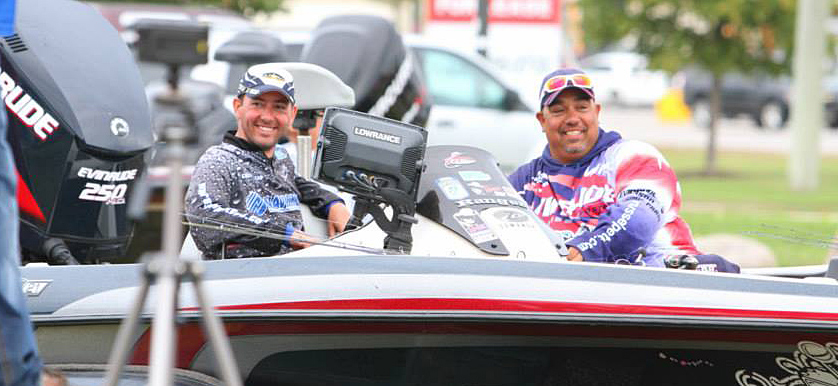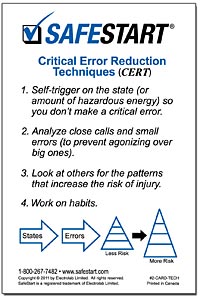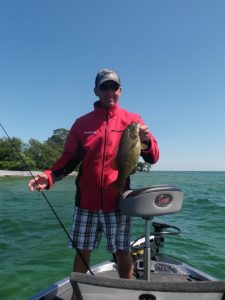Can you use safety training to be a better angler?
By Casey Ruttan

They say that at professional levels of many sports the talent level at the top is pretty close. The difference between first and tenth on competition day is often the state of mind the winner was in. They knew they could do it from the moment they woke up that day. All the preparation, training, practice and sacrifice culminates into that one moment—your time to shine!
Anyone that’s ever won any kind of competition will tell you things like, “it all came together,” “the stars lined up,” “it was a perfect day,” and “the conditions couldn’t have been better.” But what about the times when conditions aren’t perfect? Or when the stars aren’t lined up? Are we bound by the conditions that surround us? Or can we create better conditions in our minds when things don’t go our way?
The good news is that the answer to that last question is YES! When we look back on those “perfect” days, chances are we weren’t in a rush, we were calm and removed from the everyday frustrations we experience, we had lots of energy, and we were comfortable in our surroundings to be able to focus on the task at hand. Hmm, sounds like a typical practice day, doesn’t it? I’ve often said to my partner Mike, “if I could find that place every day on the water, I’d be able to do a lot better when it really matters.”
Now you don’t have to go out and start looking for a sports psychologist to help you find some special Zen state that’ll magically let you win the Bassmasters Classic this year. The key is in error reduction. Avoiding mistakes we never wanted to make in the first place. Not just mistakes on the water either. This is a 24/7 approach that starts as personal safety awareness and becomes a part of our lives every day. These are skills. Skills can be learned, and perfected. That’s the “Zen” I’m talking about.

So what are the skills? In SafeStart personal safety awareness training we call them Critical Error Reduction Techniques or CERTs. The four CERTs shown in the graphic may need some explanation.
What do I mean by self-trigger? It’s about realizing in the moment that rushing, frustration or fatigue might be starting to affect my eyes or mind on task. Instead of worrying about getting to the boat launch on time, my first thought needs to be “eyes and mind on task” because I’m driving, and if I get hit by another vehicle or get a speeding ticket on the way it won’t matter whether I’m late. Ever break a fish off? I’ve caught fish with the previous bait still in their mouth! But that would never have happened if I lost my marbles and made a bunch of noise out of frustration. See how this relates back to the state to error pattern?
How about analyzing close calls? Well, when we break down a close call we can see where the states became a factor so next time it happens we’re ready for it. The outcome translates to an automatic response instead of an emotional or state-related reaction. Ultimate mastery of this skill creates the ability to anticipate error before it happens.
Look at others, Casey? Isn’t that a little creepy? Well it can be if you were to watch someone for 20 minutes! But it doesn’t take that long. Watching others for the state-to-error pattern is kind of like analyzing close calls, except it’s not ourselves and it’s in real time. But it has the same effect. Seeing someone clearly not paying attention will help keep ourselves in the moment for obvious reasons. We don’t want to make a critical error.
Finally, work on habits. This is the critical error reduction technique we use to fight complacency. This state is built into us as human beings so self-triggering on this state is difficult. Without complacency we’d never leave home. Remember the first time you rode a bike or drove your bass boat? At those moments our awareness was high and our eyes and mind were totally on task because we didn’t have the skills yet to be comfortable. But over time we developed those skills and soon we’re an expert. How many times have you heard, “I can drive that boat with my eyes closed!” Ya right, I wonder how that would go for ya! In a nutshell, this is complacency and this is what gets people hurt or worse every day.
Some of the habits taught in SafeStart are:
• Test your footing or grip before you commit your weight.
• Move your eyes first before moving your hands, feet body or car.
• Get your eyes back on the road quickly if you’ve been distracted.
• Look for things that could cause you to lose your balance, traction or grip.
So it’s all about skills. It’s not magic! Try it for yourself and with practice you’ll not only be safer but you’ll be a better angler too!
(Download a PDF of the Another Angle for Anglers article.)
 About the author
About the author
Casey wears many hats in sharing his passion for and knowledge of performance improvement—he is a professional bass tournament fisherman, an account manager at SafeStart and an author with a background in the field of learning as a former instructor, public speaker and consultant.
Connect with Casey on LinkedIn: www.linkedin.com/in/caseyruttan
